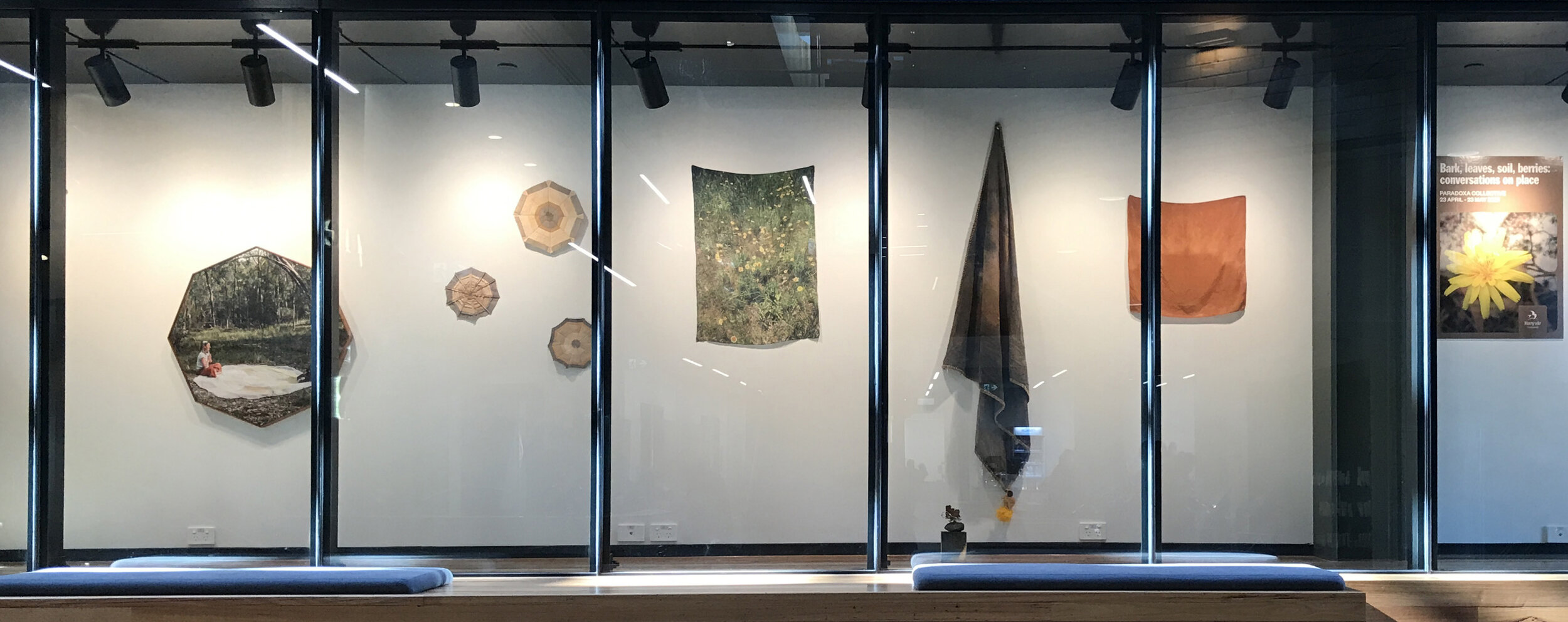
Bark, leaves, soil, berries: conversations on place
23 April - 23 May 2021, Gallery 275, Ivanhoe Library and Cultural Hub
In Bark, leaves, soil, berries, Paradoxa Collective artists explore personal and broader connections and complexities regarding relationships with the natural environment. Presented at the Ivanhoe Library and Cultural Hub, this exhibition is an extension of Satellite of Love, held at the Eltham Library from January - March 2021. Both shows are informed by events at Bunjil Reserve, Panton Hill on Wurundjeri Woi Wurrung Country. These included a series of curated walking talks designed in 2019-20 as a cross cultural exchange of knowledge as well as ongoing revegetation activities as members of the ‘Friends of the Bunjil Reserve Food, Fibre and Medicine Garden’.




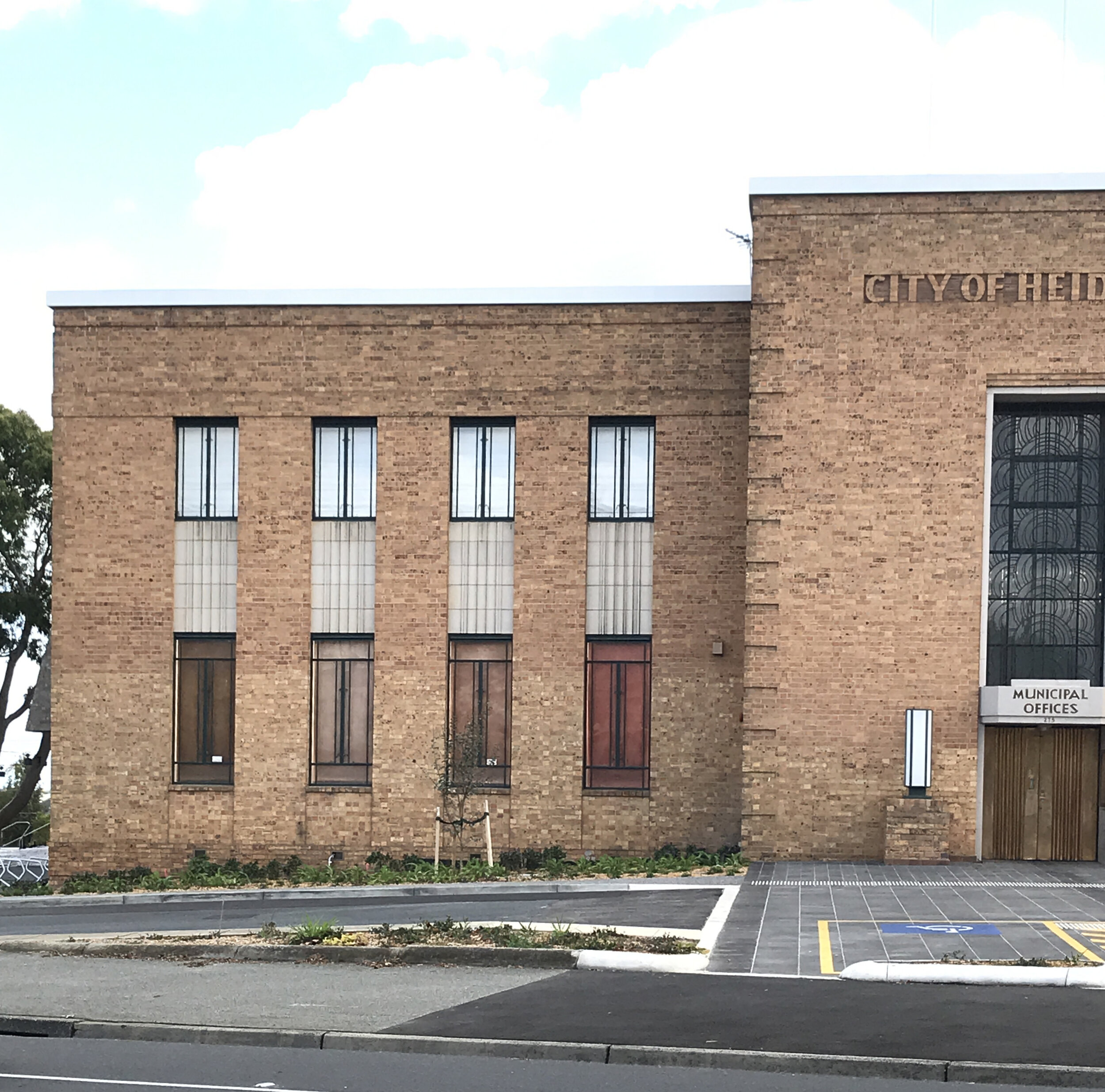




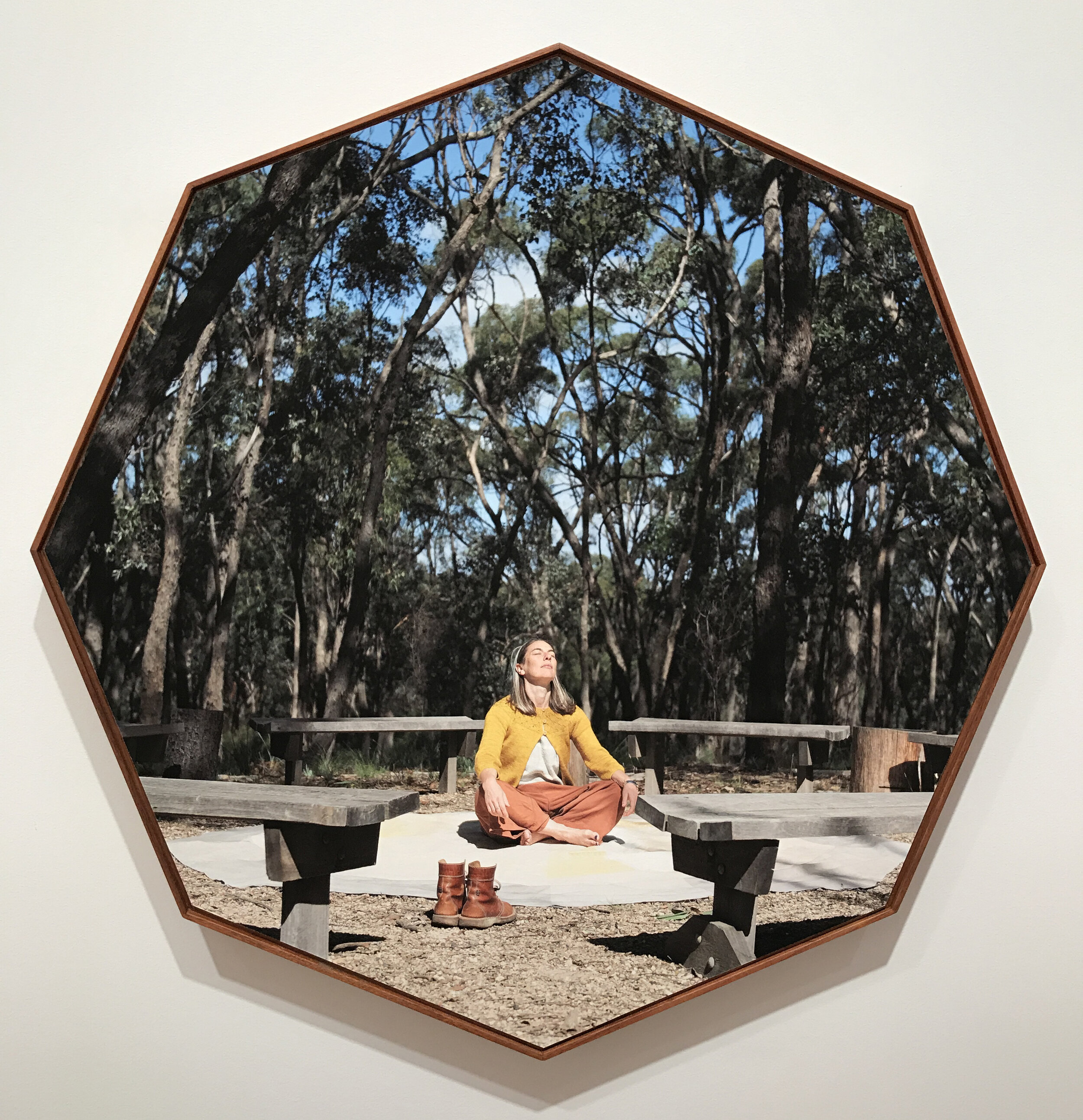

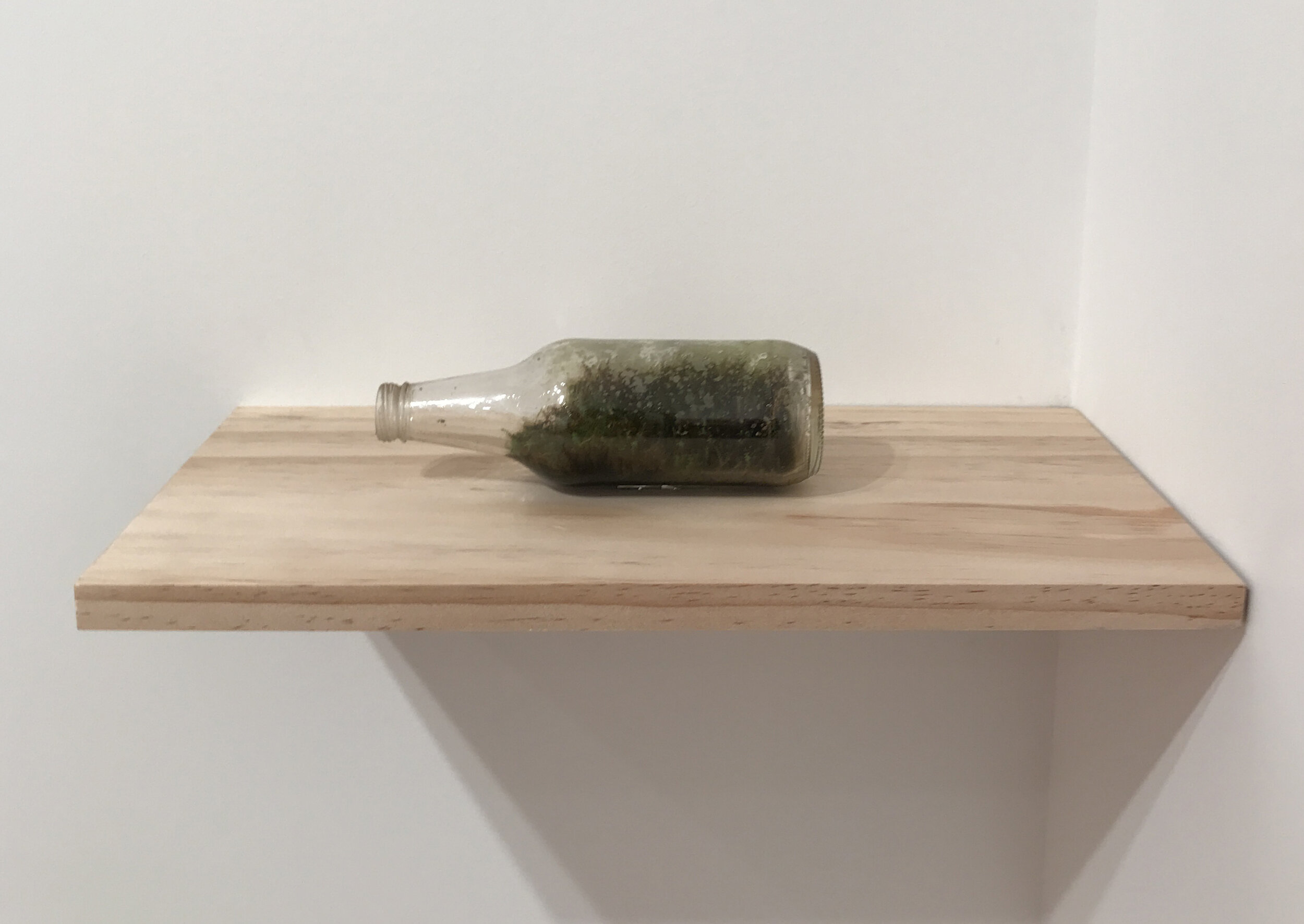
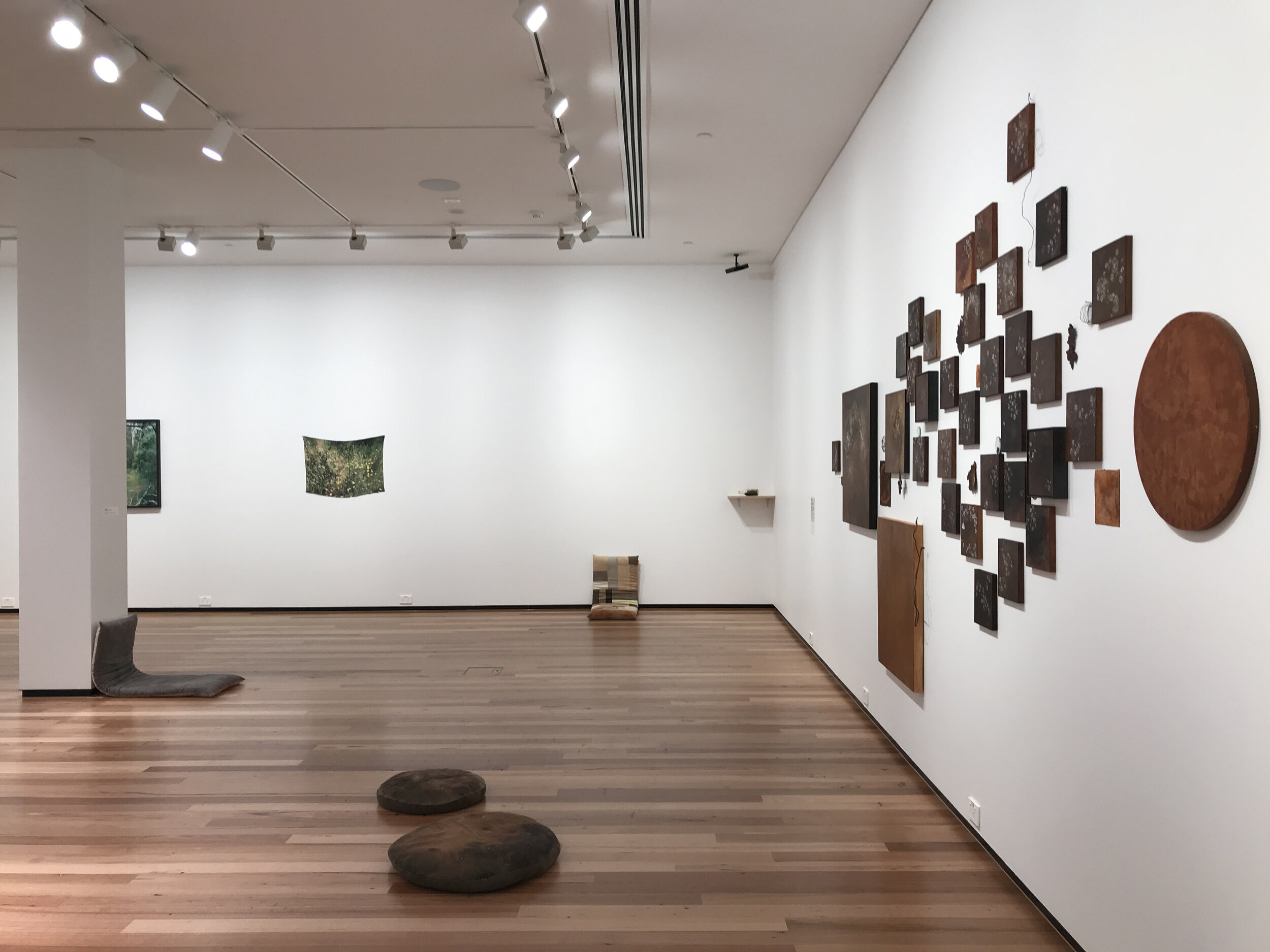
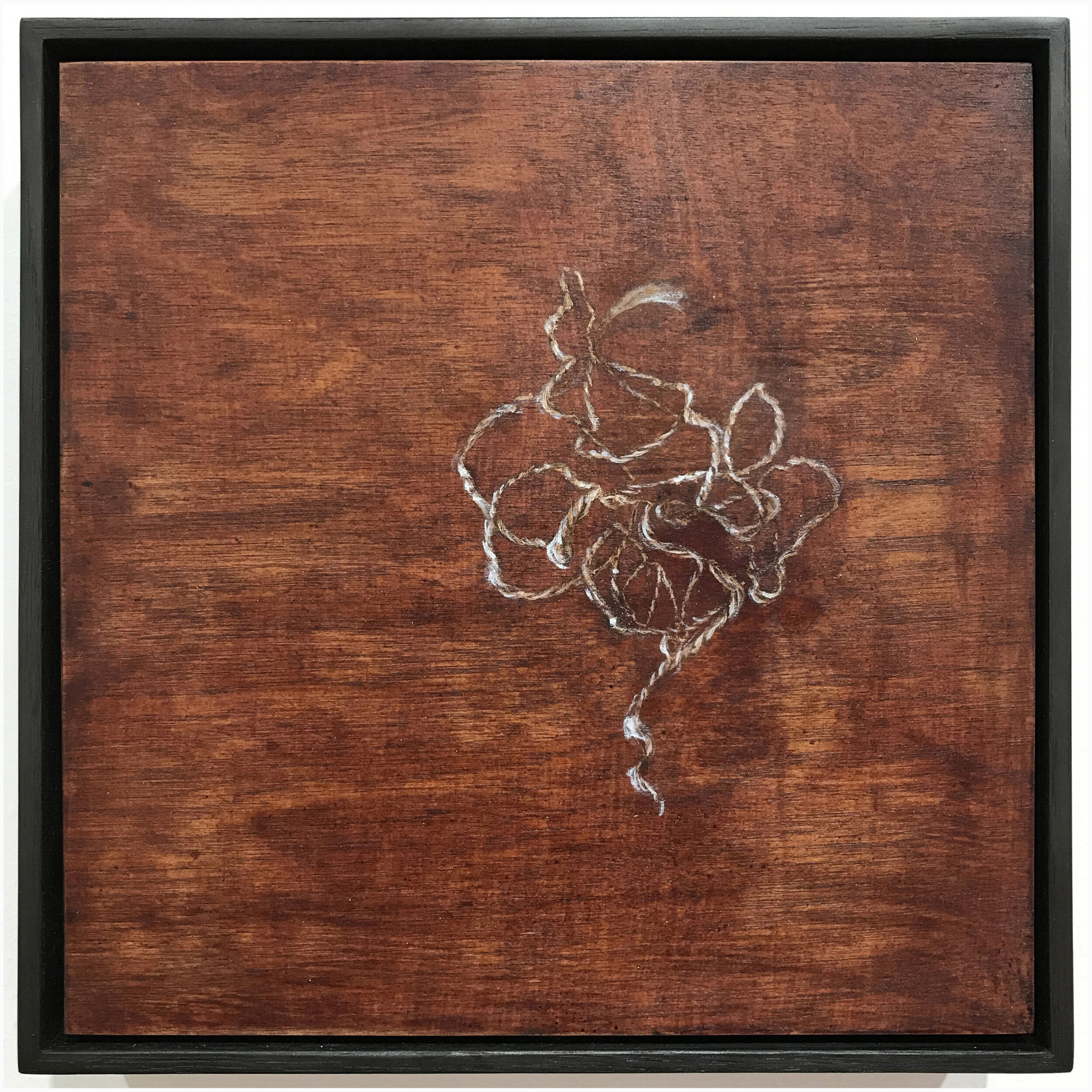

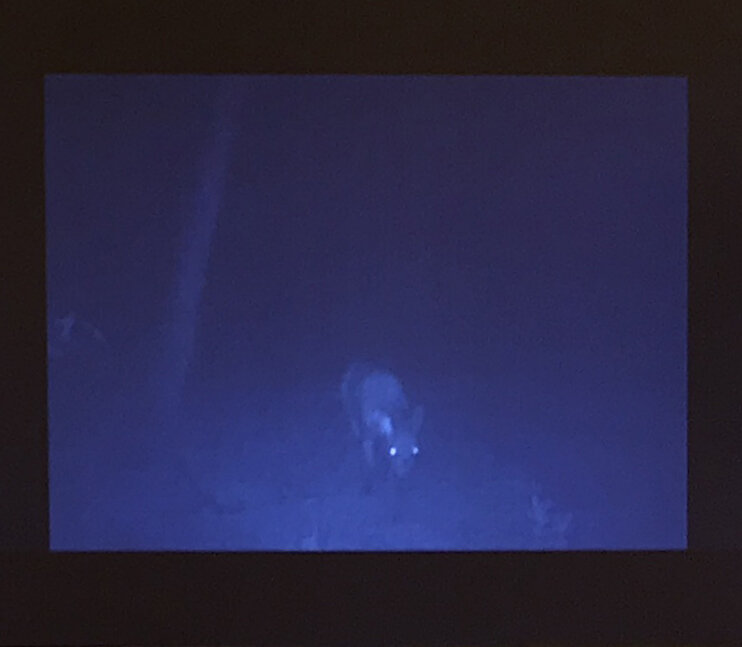
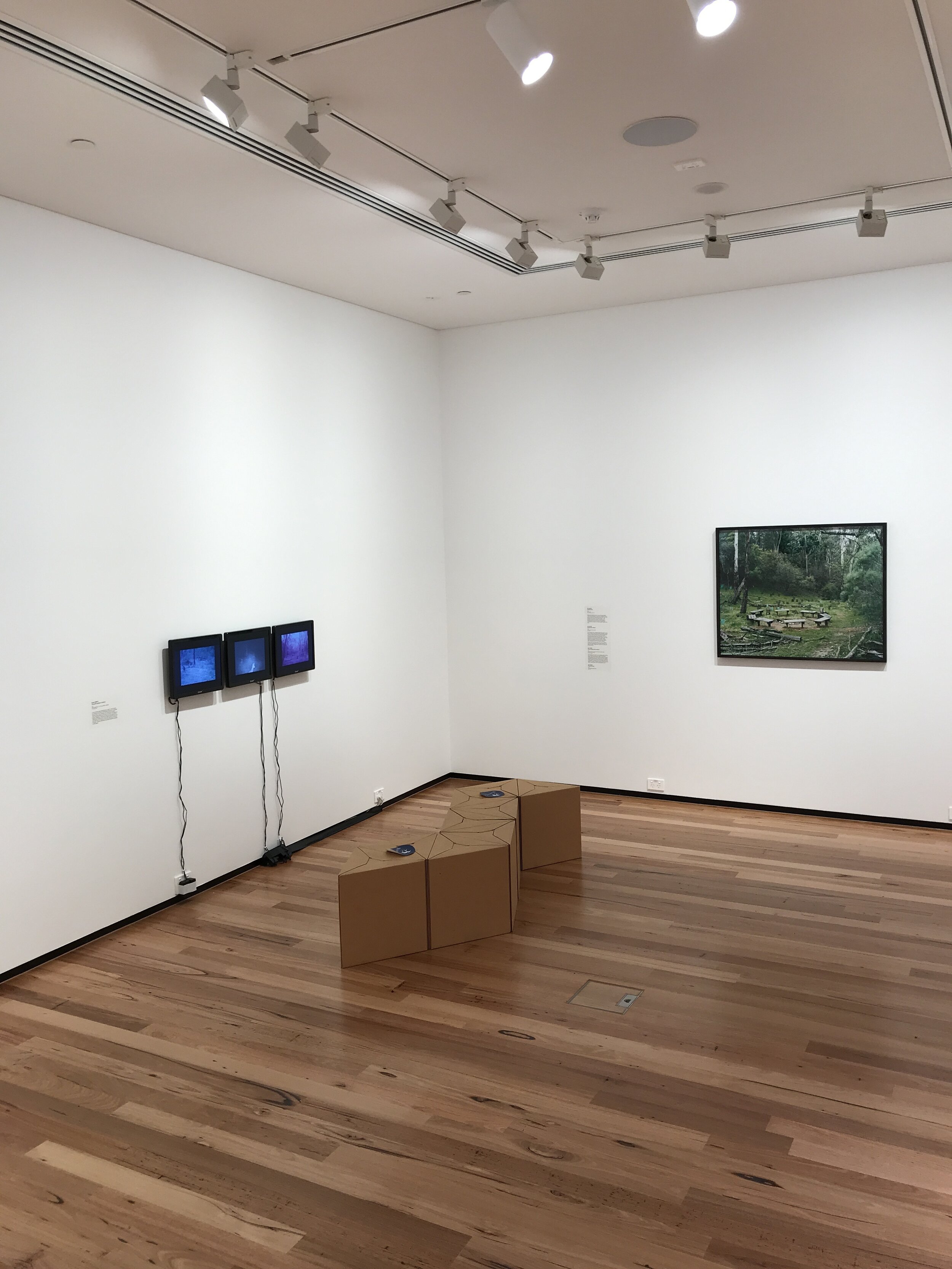

Annotated list of works
1. Susan Wirth, The gully (spying on nature), 2021, video installation, 3 cctv surveillance monitors, 11 min loop
I live and work nearby Bunjil Reserve, which is one of seven that comprise the Panton Hill Bushland Reserves. For the past several years I have assisted in the monitoring of the wildlife including nestboxes and tree hollows. This activity of walking, collecting, watching and observing has deepened my relationship to these places. The footage collected for this work was taken from one camera in the same gully over a period of 8 months. Thanks to Nillumbik Environment staff who assisted in this project.
2. Siri Hayes, Seating Circle, 2020, Type C print, 100 x 125 cm , 1/6
Seating Circle depicts one of the octangle shaped seating circles in the Bunjil Reserve Food Fibre and Medicine Garden on the morning before Wurundjeri Elder and artist, Aunty Judy Nicholson, spoke about the Wurundjeri 8 Seasons. In the photograph, the seating circle sits in anticipation of the particular event but also symbolises an active vessel or receptacle-like monument to all past and possible future conversational exchanges in the internal space created by the circle.
3. Siri Hayes, Bunjil paper daisies I 2020, inkjet on silk Crepe de Chine, 80 x 60cm
Encountering the flora depicted in Bunjil paper daisies I was a burst of revitalising beauty after lockdown prevented three of the four Paradoxa Collective members from visiting Bunjil Reserve for much of the second half of 2020. Many of the Paradoxa Collective practical activities and conversations occur in the Bunjil Reserve Food Fibre and Medicine Garden where these daisies were observed bursting in their vitality. Monthly weeding and revegetation along with a series of ‘Walking Talks’ we curated with experts from various areas keeps a certain dedication to place in the Paradoxa Collective.
Printed on silk, the image drapes on the wall in an ethereal manner that potentially refers to the sublime lightness of the ephemeral daisies alongside their ongoing or everlasting yet delicate goodness.
4. Siri Hayes, Bunjil seating circle cushion I, 2021, botanical and commercial dyed natural and synthetic fabric, wool and cotton wadding, 45 x 120 x 10 cm
Bunjil seating circle cushion I is one of 8 cushions with the same dimensions as the wooden seats of Bunjil Reserve seating circles. Each Paradoxa Collective member along with invited attending artists, Nusra Qureshi and Hannah Gartside contributed to the production of these cushions. We gathered regularly over a month to share materials, ideas and conversation. It is intended that the cushions be used in future events at the reserve. Perhaps to kneel on whilst weeding or to make a wooden bench seat more comfortable to sit on.
5. Siri Hayes, Bunjil seating circle cushion II, 2021, botanical dyed linen and cotton fabric, wool and cotton wadding, 45 x 120 x 10 cm
6. Siri Hayes, Bunjil terrarium, 2021, found bottle containing moss, 25 x 7 cm
7. Penelope Aitken, Smoak (& mirrors), 2021, Eucalyptus, kunzea and mistletoe ink, charcoal, oil and acrylic paint on boards with found objects including rusty metal, wire, magnets and mirrors. (Installation dimensions variable)
Smoak (& mirrors) is a big modular drift comprising multiple square panels and found objects - mainly from Bunjil Reserve. The panels are painted with ink distilled from eucalyptus and mistletoe leaves, and feature Kunzea leptospermoides (Yarra burgan) flowers, a common indigenous shrub that colonises the area after clearing or bushfire. The title, 'Smoak' uses the spelling recorded by Joseph Banks in his diary on first seeing the east coast of Australia from the Endeavour in 1770, where plumes of campfire smoke clearly signalled a peopled landscape. Smoke has also played a significant role during our activities at Bunjil Reserve where numerous smoking ceremonies have been held to welcome public activities, to educate visitors and remind us that the land has never been ceded. Among other things, the work considers 250 years of fraught and fruitful interaction between Europeans and Aboriginal people in Australia.
8 - 11. Anna Farago, Soft Paintings (Bunjil Reserve and beyond) 1-4, 2021, cotton & linen fabric (dyed with eucalyptus, native cherry, bark, leaves and iron) worn clothing, cotton and silver thread. 4 x 60 x 60 cm each (dimensions variable)
Soft Paintings (Bunjil Reserve and beyond) considers ecosystems of place, community and family. Broadly, I consider the fragile state of the world: environmentally, socially, politically and economically. The abstract compositions are suggestive of and make us of interdependence. Specifically, I am informed by Bunjil Reserve as a site of personal refuge but also of conversation, restoration activities, and a place layered with history and waves of change. Bark, leaves and rusty iron from the Reserve were used to dye fabric. These are sewn together with my late husbands clothes, and scraps of silk from my Mum’s wedding dress, made from a sari she purchased as a young woman on an adventure across India in the 1950s. These materials, with their separate connections, cross time and place.
12. Anna Farago, Bunjil seating circle cushion III, 2021, botanical dyed linen and cotton fabric, worn clothing, wool and cotton wadding, 45 x 120 x 10 cm
13. Anna Farago, Mapping Meditation II, 2020, pigment print on dibond, photo: Samara Clifford for Anna Farago, 75 x 75 cm
In Mapping Meditation II I am seated on a large textile patchwork I made with fabric dyed with stuff from Bunjil Reserve and my husband, Adrian’s worn clothing. I sit within one of the three seating circles, soaking up the essence of the bush, within the confines of the seats designed in consultation with the Wurundjeri. My posture suggests the seeking of guidance, the colour of my jumper also radiates a sunny warmth. It was the last handknit my mother made me before the effects of dementia made it impossible for her to knit anymore.
Internal gallery window
14. Siri Hayes, Bottle of everlastings, 2021, found bottle containing paper daisies similar to those found at Bunjil Reserve Food Fibre and Medicine Garden paper daisies, 7 x 10 cm
15. Anna Farago, Mapping Meditation I, 2020, pigment print on dibond, Photo: Samara Clifford for Anna Farago, 75 x 75 cm
16. Anna Farago, Seating Circle Fabric Sketches, 2020, cotton & linen fabric (dyed with eucalyptus, native cherry, bark, leaves and iron) worn clothing, cotton and silver thread, dimensions variable
17. Siri Hayes, Bunjil paper daisies II, 2020, inkjet on silk Crepe de Chine, 80 x 60 cm
18. Penelope Aitken, Rust relic, 2021, rusted metal, magnets, wax, wire and wood, 30 x 15 x 15 cm
19. Penelope Aitken, Prayer mat for nature worship (horse wisdom), 2021, eucalyptus, iron, mud, charcoal, gesso and bleach with wool on canvas, approx. 120 x 120 cm
20. Siri Hayes, Bunjil rising, 2016, Irish strawberry botanical dye on silk, 30 x 30 cm
Street windows: Four facing Upper Heidelberg Rd and three facing the library carpark
21 - 28. Susan Wirth, Homage to felled trees and unknown histories, 2021, silk satin crepe, botanically dyed from red box, narrow leaved peppermint, yellow box, silver gum, long leaved box, cherry ballart, blackberries, rust, cotton thread and alien tape, 271 x 114 cm
A council environmental officer observed in a recent vegetation survey that there were very few old growth trees in Bunjil. In response to this, I have created seven silk pieces for the interior of the art deco window feature of gallery 275 in honour of the felled trees and the unknown histories of this place. Each piece is dyed from different eucalypts and native plants featured in Bunjil. I have also included blackberry, an insidious weed and rust from remnant remains of dumped cars found in the reserve. Each member of the collective have either contributed materially and/or shared their knowledge of botanical dyeing to assist me in the making of this work.

